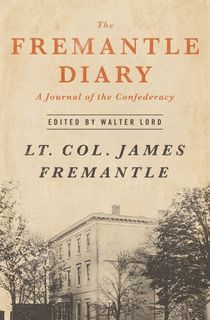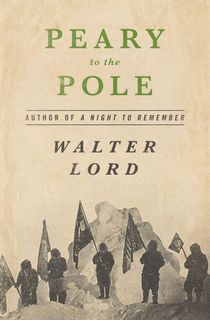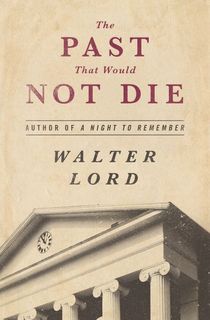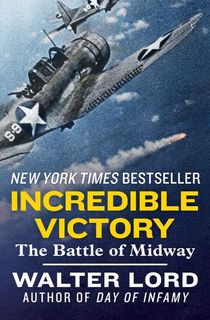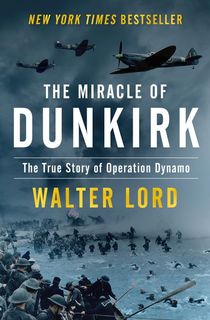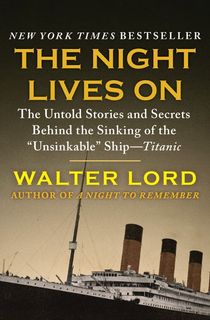Pop history—sometimes deservedly—gets a bad rap. The loosely defined genre prioritizes narrative and character, occasionally in a manner at odds with historical accuracy. Academics sniff to see untrained, amateur historians blaze up bestseller lists, while more rigorous works fail to make waves. Yet, some pop historians rise to the top of public and academic esteem—like Walter Lord.
Related: 12 Escapist Nonfiction Books That Will Spirit You Away
Lord, now infrequently read, was one of the preeminent pop historians of the mid-20th century. But his work continues to resonate with readers to this day, in part due to his choices of subject, and in part due to his methods in recreating individual nights and days that made up major, culture-shaping events.
Hardly the first to use oral history methods, Lord was able nonetheless to put them to unprecedented effect in his most remembered work, A Night to Remember. The recounting of the sinking of the RMS Titanic reignited popular interest in the sinking in the 1950s through its interviews from over 60 survivors of the tragedy to build a deeply compelling, personal narrative of an unfathomable tragedy.
As a young boy, Lord himself sailed upon the RMS Olympic, the Titanic’s sister ship. It’s not hard to picture a small boy clambering amongst a gargantuan ship, exploring its corners and crevices in hopes of finding answers behind the fatal incident that took down its twin.
In fact, Lord would later regularly refer to this as a turning point in developing his interests. He went on to graduate from Princeton with a history major, although he then took that degree into Yale Law School—which was interrupted by the outbreak of World War II. Lord served in the Office of Strategic Services for three years in London, returning to Yale after the war ended. He then moved into a career in advertising in New York City.
Despite a comfortable career in advertising, Lord couldn’t fully leave behind his historical yearnings. In the evenings, he began reading a diary written by British Army officer Arthur Fremantle during the American Civil War. Fascinated by the insights shown by an outsider who was taken in by Confederate propaganda, Lord started working on a manuscript that combined Fremantle’s perspective with historical context.
Fremantle was purposefully shown a picturesque, idealized version of the Confederacy that promoted slavery as a positive, Southern secessionists as loyal and true, and the federal insistence on ending human bondage as nothing short of tyranny. Today, it’s easy to look back and see just how Fremantle was guided to those incorrect conclusions—and led to share them further with the world.
Related: 12 Essential Books About Slavery in America
Lord recognized the importance of showing this perspective, and published Fremantle’s diary with new notes and introduction, highlighting how he could see the true strengths of the South and the American frontier while ignoring its weaknesses and its moral failings.
The Fremantle Diary, though only a minor publishing success, shows much of what made Lord’s eye so valuable. He understood the importance of a single view into a major event: how it could both reveal and elide the truths behind history. He’d put that ability to incredible use with his next book, A Night to Remember.
Lord’s take on the Titanic catapulted him into popular culture—just three years after the book was published, a movie adaptation of A Night to Remember was released. The film was only a minor box office draw, but was beloved by survivors and the families of those aboard the Titanic for its accuracy and its human appeal.
The success of A Night to Remember allowed Lord a fair amount of freedom in future subjects. He first reached back to his years in World War II to cover the events of Pearl Harbor in Day of Infamy. Lord once again relied on first-person interviews, letters, and diaries of the incident to bring that fateful day alive.
Lord’s ability to focus into the personal experiences of individuals at the center of world-changing events is what made him famous, but his ability to zoom out to a broader narrative is apparent in his next book, The Good Years. Focusing on the years just before his own birth, Lord attempts to re-contextualize the beginning of the 20th century.
Through a series of vignettes of the first 14 years of the 1900s, Lord shows both the incredible achievements (the first flight, the Model T, years of relative peace) and the setbacks (the assassination of President McKinley, the struggle between labor unions and ever-growing corporations) of a relatively unexamined era.
Related: Discover Labor Day's History and Origins from its Industrial Revolution Roots to Today
Lord’s next books showed how his methods could be applied to wildly different eras and events while still resulting in books that any amateur historian would adore. First, he turned back in time to the Alamo, using contemporaneous documents to explore what really happened on that day in Texas.
Peary to the Pole, unlike most of his books, focused on pure human triumph rather than overcoming the adversity of battle, shipwreck, or the times. Instead, it follows the first expedition that reached the North Pole—although whether Peary and his companions actually reached true North has come into question in recent years. Lord manages to cast the climate itself as the men’s antagonist.
His subsequent subject was one only a few years separated from his writings—Lord was captured by the Ole Miss riots, brought on by white antagonism to James Meredith, a Black veteran’s matriculation in that Mississippi stalwart. No doubt Lord’s experience with Fremantle came in handy here, as he tied the modern Civil Rights Movement to the Civil War and years of segregation and terror since.
Related: 13 Books to Read for Black History Month
Writing this book during the heights of the Civil Rights Movement in 1965, Lord offers valuable perspective into the moment as it was experienced at the time—the terror and upheaval felt by those who risked their own bodily safety to desegregate American institutions.
Centering around a less-told, yet vital, story of school desegregation than the more common images of young children sent to Little Rock schools or white parents in Boston protesting bussing, James Meredith’s tale is told deftly and respectfully by Lord.
After many years of excursions from his major interests in major battles and shipwrecks, Lord then returned to World War II to investigate the Battle of Midway. One of the most significant naval battles in history, Midway saw the utter destruction of American forces at Pearl Harbor reversed upon Japanese fleets.
The shocking reversal and the Americans’ code-breaking capabilities are exactly the type of intrigue that Lord’s best work puts to great effect—and there can be no doubt that Lord’s work in the OSS during WWII made him deeply aware of how important the work of cryptographers and spies was during the conflict.
Related: 6 Incredible Female Spies of World War II
In his next book, Lord took inspiration once again from his childhood. Born and raised in Baltimore, the author was deeply familiar with the Battle of Baltimore, the War of 1812 conflict during which Francis Scott Key wrote the poem that became our national anthem.
Focusing on the final months of 1814, Lord brings to life the perspectives of both British and American forces, as well as the Native Americans who joined the fight in their own right.
Lonely Vigil focuses on perhaps Lord’s least-known subject. The Solomon Islands, despite a lack of recognition today, were one of the key campaigns in the Pacific Theater. Lord brings two long years to life as coastwatchers slowly wore Japanese forces down.
This campaign was a success for the Allies in part due to men who put their lives at risk to gain intelligence from behind Japanese lines—many of whom Lord was able to interview directly.
Lord is known for his WWII books, especially his penultimate book, about the Dunkirk Evacuation. The Miracle of Dunkirk brought American understanding to the scale, the joy, and the despair felt by British forces. Brought to greater attention in 2017 by the Christopher Nolan film, this campaign can be difficult to fully contextualize.
Although it was a loss, the number of British troops, thought to be doomed, who were saved thanks to help from average citizens, made Dunkirk into a true miracle. Lord brings individual stories to light in his retelling.
In 1985, the wreck of the Titanic was discovered. A year later, Lord released his followup to A Night to Remember—this time, he focused not just on the people who lived through that night or lost their lives, but on the how behind the sinking. This book shows Lord’s ability not just to construct a thrilling narrative, but also his skills in research and historical analysis.
No matter where your historical interests lie, Lord’s deft hands guide readers through stunning historical achievements and chaotic scenes alike.
This post is sponsored by Open Road Media. Thank you for supporting our partners, who make it possible for The Archive to continue publishing the history stories you love.

